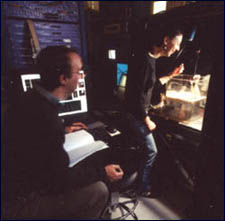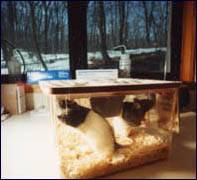

"We’d like to understand how a rat makes a decision. A decision, in this case, involves a sensory cue, an odor, and a meaning for that odor that the rat has learned because we’ve trained it in a particular way.
"The decision
happens somewhere in the brain, where sensory information comes
together with memory, with learning, and with motivation. In this
case, the rat is motivated to find water. So it's learned
a particular cue.
"They use odors in their social lives, as sources of food or to avoid predators, and to navigate. They’re very attuned to smell versus vision or hearing. We take advantage of that in our experiments by using odors to direct their behavior."Essentially, we will teach the rat that this particular odor means it will get water as a reward. An odor can serve as a cue for the rat to tell it where to go and at what time. |
|

|
|
|
|
|
|
"There’s
a compromise between what you can do ethically in an organism, and
the organism being close to humans. You cannot ask someone to open
up their head and examine it with electrophysiological tools that
do certain kinds of invasive imaging when it’s possible to
do it in a simpler organism. So we get a level of analysis that
is only possible in humans very rarely, such as the case of a patient
having surgery for epilepsy, for example. In humans, we get a much
coarser view of the brain."
|

|
|
|
|
|
|
|
|